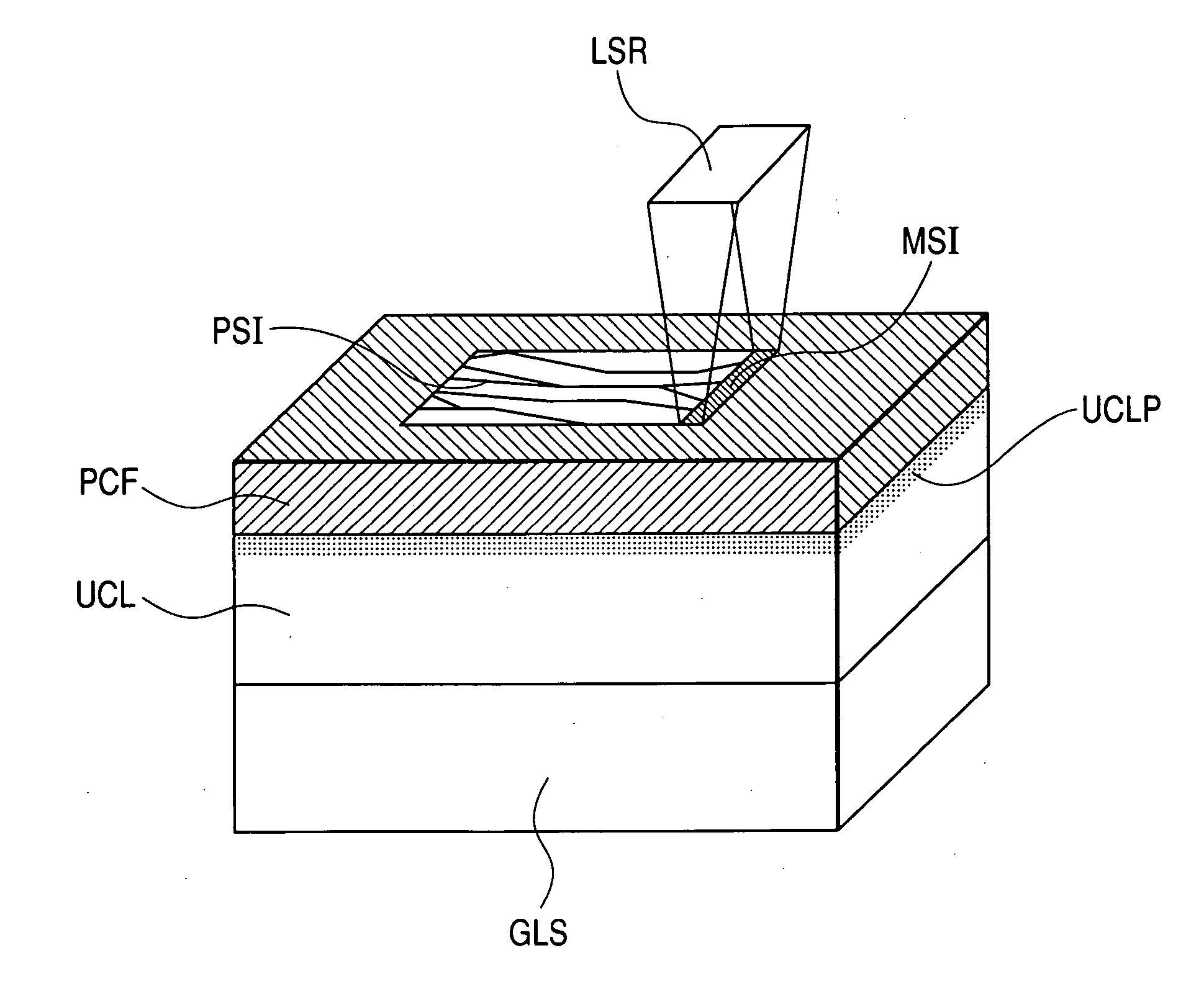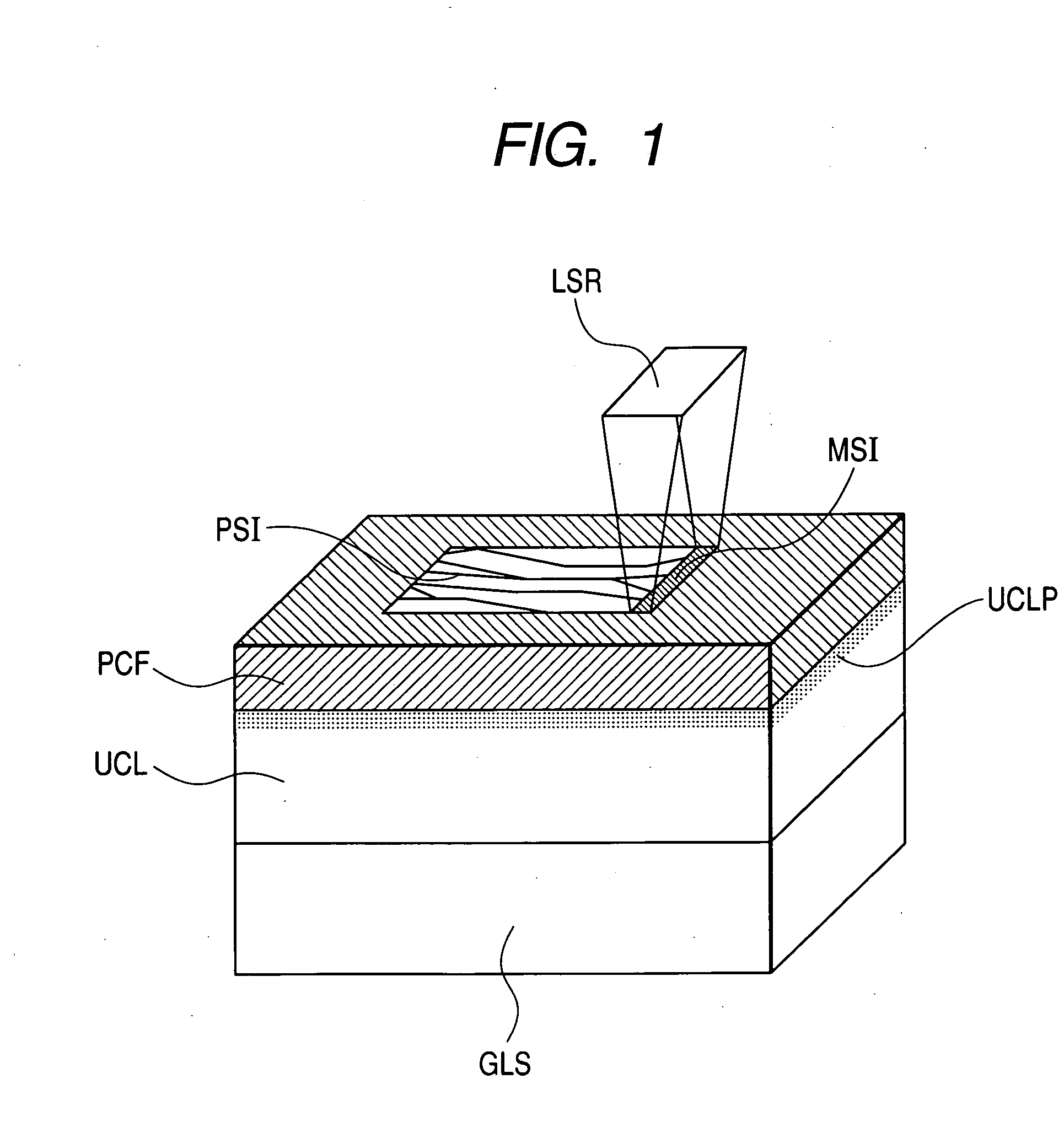Thin film semiconductor circuit, manufacturing method thereof, and image display apparatus utilizing the same thin film semiconductor circuit
- Summary
- Abstract
- Description
- Claims
- Application Information
AI Technical Summary
Benefits of technology
Problems solved by technology
Method used
Image
Examples
first embodiment
[0041] First Embodiment
[0042] In the first embodiment, another element is substituted for the oxygen of the silicon oxide film. In this case, the polarization coefficient may be lowered when an element having an electronegativity which is smaller than that of the oxygen element, namely the element belonging to the group smaller than the 6A group, is substituted. Usually, the CVD film formed using TEOS (Tetraethoxysilane) gas as the raw material is employed as the silicon oxide film because it has excellent coverage.
[0043] An example of forming a TEOS film will be explained below. First, oxygen gas, helium gas, and TEOS gas are introduced into a chamber in which a substrate is prepared in the flow ratio of 1:1:1. After the gases are stabilized, plasma is generated with the RF output of 450 W in order to form an oxide film on the substrate using the chemical vapor deposition method. When the film is grown up to a thickness of 100 nm under a time control (7 seconds or more), the react...
second embodiment
[0051] Second Embodiment
[0052] Moreover, as a second embodiment, a film other than the silicon oxide, film which can improve wettability of the melted silicon, may be employed for the underlayer UCL. For example, it is recommended to employ silicon carbide (SiC) and diamond-like carbon (DLC) as the underlayer. Any method can be selected from the ion beam evaporation, sputtering, arc discharge and CVD methods for formation of SiC and DLC. DLC may also be formed as a semiconductor material depending on the film forming conditions. When the resistance value is lowered, a disadvantage occurs in that the element-to-element insulation becomes bad and a parasitic element, such as a thyristor, operates. However, as disclosed in the non-patent document 3 (Thin Solid Films 373 2000 pp251-254), the necessary insulation property can be acquired by lowering the film forming temperature and the RF output in regard to the resistivity of DLC.
[0053] For the method of manufacturing a semiconductor c...
third embodiment
[0055] Third Embodiment
[0056] Unlike the ideal silicon oxide film, the actual silicon oxide film includes OH group and H2Omolecules in the film. These molecules are in the state captured with a hydrogen bond and a weak bond like an intermolecular force, and the amount of these molecules is determined depending on the film forming method and raw material gas or the like. When the SiO film is employed as the underlayer UCL, the amount of OH group and H2O molecules captured are considered to be larger than that of the TEOS film. With implementation of a high-temperature heat treatment, such as annealing in a furnace or annealing by excimer laser, an oxygen atom resulting from an OH group and H2O in the SiO film can be introduced into the silicon film PCF. Moreover, a similar effect can also be attained at the time of melting and re-crystallization using the laser beam LSR. As a result, the wettability of the melted silicon film MSI for the silicon oxide film can be improved, and agglom...
PUM
 Login to View More
Login to View More Abstract
Description
Claims
Application Information
 Login to View More
Login to View More - R&D
- Intellectual Property
- Life Sciences
- Materials
- Tech Scout
- Unparalleled Data Quality
- Higher Quality Content
- 60% Fewer Hallucinations
Browse by: Latest US Patents, China's latest patents, Technical Efficacy Thesaurus, Application Domain, Technology Topic, Popular Technical Reports.
© 2025 PatSnap. All rights reserved.Legal|Privacy policy|Modern Slavery Act Transparency Statement|Sitemap|About US| Contact US: help@patsnap.com



